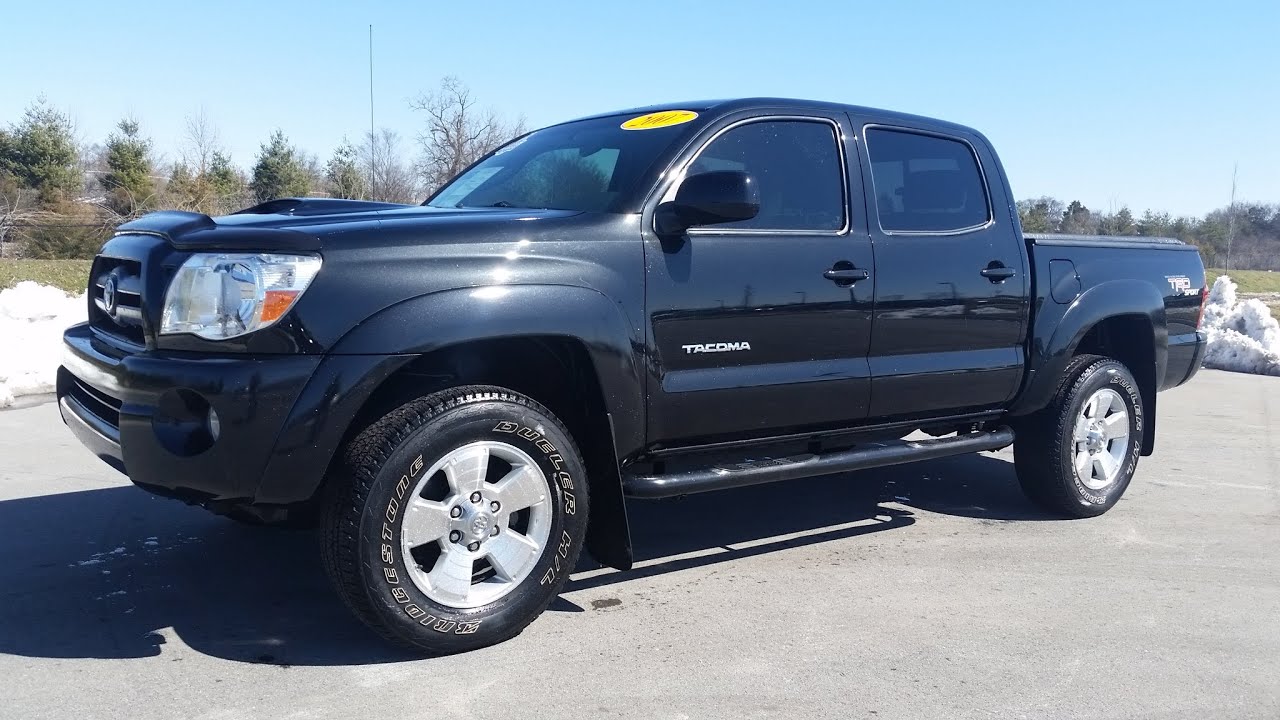Prerunner Trucks For Sale In California: Your Ultimate Guide to High-Speed Desert Dominance sale.truckstrend.com
California, with its vast deserts, iconic off-road racing heritage, and thriving automotive culture, stands as the undisputed mecca for prerunner enthusiasts. These aren’t just your average lifted trucks; prerunners are purpose-built machines designed for high-speed reconnaissance and support in the most brutal off-road environments. They are the reconnaissance vehicles of desert racing, scouting courses, testing lines, and ensuring safety, all while embodying an unmistakable blend of raw power, robust engineering, and audacious style.
For anyone dreaming of conquering the dusty trails of Barstow, tackling the washes of Ocotillo Wells, or simply owning a vehicle that turns heads and handles rough terrain with effortless grace, a prerunner truck is the ultimate aspiration. This comprehensive guide will navigate the exciting world of prerunner trucks for sale in California, offering insights into what makes them unique, where to find them, what to look for, and the practicalities of owning one in the Golden State.
Prerunner Trucks For Sale In California: Your Ultimate Guide to High-Speed Desert Dominance
What Makes a Prerunner a Prerunner? The Anatomy of a Desert Beast
At its core, a prerunner is engineered for speed and durability over challenging, unpredictable terrain. Unlike rock crawlers designed for low-speed articulation, prerunners excel at absorbing massive impacts and maintaining stability at high velocities. Their distinctive features are a testament to this specialized purpose:
- Long-Travel Suspension Systems: This is the heart of any prerunner. Featuring custom-fabricated control arms (often boxed or tubular), heavy-duty coilovers, and bypass shocks (sometimes multiple per wheel), these systems allow for incredible wheel travel – often 18-30 inches or more. This extended travel enables the wheels to move independently over large obstacles without unsettling the chassis, ensuring a smooth ride and maintaining tire contact with the ground at speed.
- Reinforced Chassis and Frame: The stock frame of most trucks isn’t designed for the stresses of high-speed desert abuse. Prerunners typically feature extensive frame reinforcement, including boxing, gusseting, and often a custom tube chassis or roll cage integrated into the frame for maximum rigidity and safety.
- Engine and Drivetrain Modifications: While not always about raw horsepower, engines are often tuned for reliability and consistent power delivery in harsh conditions. Enhanced cooling systems (larger radiators, transmission coolers, oil coolers) are crucial to prevent overheating. Heavy-duty transmissions, transfer cases, and differential upgrades (including lockers) ensure power gets to the ground reliably.
- Aggressive Tire and Wheel Setups: Large, aggressive off-road tires (35-40 inches or more) mounted on beadlock wheels are standard. Beadlock wheels prevent the tire from separating from the rim at low pressures or under extreme lateral forces, which is critical for maintaining traction and control.
- Safety Features: For serious prerunners, safety is paramount. Integrated roll cages (internal or external), racing seats, multi-point harnesses, and fire suppression systems are common, protecting occupants in the event of a rollover or impact.
- Auxiliary Lighting: High-output LED light bars, often mounted on the roof, bumper, or A-pillars, provide essential illumination for night-time prerunning, transforming night into day.
- Fiberglass Body Panels: To accommodate the massive suspension travel and wider track width, prerunners often feature wider fiberglass fenders, bedsides, and sometimes even complete front clips. These lightweight panels are also more forgiving than steel in minor impacts.

Why California is the Prerunner Hub
California’s unique geography and culture have cemented its status as the epicenter of prerunner culture:
- Proximity to Desert Terrains: The vast expanses of the Mojave Desert, Anza-Borrego Desert State Park, Johnson Valley (home of King of the Hammers), and the Glamis Dunes are all within a few hours’ drive from major Californian cities. These natural playgrounds provide the perfect proving grounds for prerunners.
- Rich Off-Road Racing History: California is steeped in the history of desert racing, from the early days of Baja 1000 and Mint 400 to current SCORE International and Best in the Desert series. This legacy has fostered a deep community of fabricators, drivers, and enthusiasts.
- Concentration of Specialized Shops and Fabricators: The state boasts an unparalleled density of world-class off-road fabrication shops, suspension specialists, and engine builders. These experts possess the knowledge, equipment, and experience to build, modify, and maintain even the most extreme prerunners.
- Active Market: With so many enthusiasts and builders, California offers a vibrant market for both new custom builds and pre-owned prerunner trucks, providing a wide range of options for buyers.

Types of Prerunner Trucks You’ll Find in California
The prerunner market in California is diverse, ranging from mild street-legal builds to full-blown race-spec machines. Understanding these categories will help you narrow down your search:
- Entry-Level/Budget Builds (Street Prerunners): These typically start with a stock truck (Ford F-150, Toyota Tacoma, Chevy Silverado) and feature basic long-travel kits, fiberglass fenders, and larger tires. They offer a taste of the prerunner look and improved off-road capability without the extreme cost or complexity. Often still comfortable for daily driving.
- Mid-Travel Prerunners: Stepping up, these builds involve more extensive suspension modifications, potentially a wider track, and some frame reinforcement. They offer significantly better performance over rough terrain than entry-level builds but might still retain some interior comforts.
- Long-Travel/Dedicated Prerunners: This category represents serious off-road machines. They feature custom long-travel suspension, extensive frame work (often including a partial roll cage), upgraded powertrains, and all the necessary safety equipment. These are often trailer queens, but some may still be street legal with proper registration.
- Full-Blown Race Trucks (Used as Prerunners): At the pinnacle, these are often retired or slightly de-tuned race trucks. They feature full chromoly tube chassis, massive custom suspension, huge engines, and every safety measure imaginable. While incredibly capable, they are rarely street legal, expensive to maintain, and best suited for dedicated off-road use.
Common base vehicles for prerunners in California include the Ford F-150 (especially Raptors), Ford Ranger, Toyota Tacoma, Toyota Tundra, Chevy Silverado, and GMC Sierra.
The Buying Process: What to Look For When Purchasing a Prerunner
Buying a prerunner, especially a modified one, requires diligence. A thorough inspection is crucial:
- Condition of the Frame and Chassis: This is paramount. Look for cracks, bent sections, poor welds, or signs of improper repairs. Extensive frame damage can be a deal-breaker. Check all gusseting and reinforcement.
- Suspension Components: Inspect shocks for leaks, shafts for pitting, and bushings for wear. Check control arms for bends or cracks. Ensure all suspension mounting points are robust and properly welded.
- Engine & Drivetrain: Ask for maintenance records. Listen for unusual noises during start-up and operation. Check fluid levels and condition (oil, transmission, diffs). Ensure the cooling system is adequate.
- Fabrication Quality: The quality of welding and fabrication is critical for safety and longevity. Look for clean, consistent welds. Avoid anything that looks hastily put together or uses thin-gauge materials where heavy-duty is required.
- Title and Registration: Ensure the vehicle has a clean title. Verify if it’s currently registered and if it can pass California smog (see Legal Considerations). Some extreme builds may have "off-road use only" titles.
- Safety Equipment: If equipped with a roll cage, ensure it’s properly tied into the frame and built with appropriate materials and techniques (e.g., DOM tubing). Check the condition of racing seats and harnesses.
- Test Drive: Take it on diverse terrain if possible. Listen for clunks, rattles, or grinding noises. Check steering response, braking, and overall handling. If it feels "loose" or unstable, proceed with caution.
- Pre-Purchase Inspection (PPI): Strongly recommended. Have a reputable off-road fabrication shop or specialist mechanic perform a comprehensive inspection. They can identify issues that might be invisible to the untrained eye and assess the quality of the modifications.
Where to Find Prerunner Trucks for Sale in California
California offers numerous avenues for finding your ideal prerunner:
- Online Marketplaces:
- Race-Dezert.com Classifieds: The premier online marketplace for serious off-road vehicles and parts. You’ll find everything from entry-level builds to full race trucks here.
- Prerunner Maniac: Another popular forum and classifieds site dedicated to prerunners.
- Facebook Marketplace/Groups: Search for "prerunner," "long travel," "off-road truck" in California-specific off-road groups.
- Craigslist: Can yield gems, but requires more careful sifting and vetting.
- Specialized Dealerships and Fabrication Shops: Many custom off-road shops in California (e.g., Camburg, Total Chaos, Solo Motorsports, etc.) occasionally have customer builds for sale or even offer turnkey prerunners. They also often know of vehicles for sale within their network.
- Off-Road Events and Races: Attending events like King of the Hammers, SCORE races, or local off-road shows can connect you directly with sellers and builders.
- Word of Mouth: The off-road community is tight-knit. Networking at local off-road parks or meet-ups can lead to private sales.
Legal & Practical Considerations for California Buyers
California’s strict vehicle regulations can pose unique challenges for prerunner owners:
- Smog Regulations: California has the most stringent emissions laws in the US. Heavily modified engines, especially older ones, can struggle to pass smog. Ensure any vehicle you consider is either smog-exempt (very rare for a prerunner) or has a history of passing smog checks. Unapproved engine swaps are a major red flag.
- Street Legality: While many prerunners are street legal, some extreme builds with wide tracks, exposed suspension components, or missing safety features (like bumpers) may not be. Ensure the vehicle meets all DOT requirements for street use in California if you plan to drive it on public roads.
- Insurance: Insuring a highly modified vehicle can be more expensive and complex. Some standard insurers may not cover extensive modifications. You might need to seek out specialty insurance providers.
- Maintenance & Running Costs: Prerunners are not cheap to maintain. Specialized parts, custom fabrication, and frequent inspections (especially after hard use) add up. Fuel economy is generally poor. Be prepared for higher running costs than a stock truck.
- Storage: Prerunners are large vehicles, often too wide for standard garage spots. Consider where you will store it, especially if you plan to trailer it to off-road locations.
Practical Advice for Aspiring Prerunner Owners
- Define Your Use Case: Are you looking for a head-turning street truck with mild off-road capability, or a serious desert machine? Your intended use will dictate the type of prerunner you need and your budget.
- Set a Realistic Budget: Prerunners range from $20,000 for a well-built entry-level truck to well over $100,000 for a long-travel or race-spec machine. Don’t forget to factor in ongoing maintenance, fuel, and potential upgrade costs.
- Don’t Compromise on Safety: If a build compromises safety for performance or looks, walk away. A properly engineered and built roll cage, strong suspension mounts, and reliable brakes are non-negotiable.
- Research Shops and Builders: If you’re considering a custom build or significant modifications, thoroughly vet the fabricator. Look at their past work, read reviews, and talk to previous clients.
- Be Patient: Finding the right prerunner can take time. Don’t rush into a purchase, especially with such a specialized and often heavily modified vehicle.
Prerunner Trucks For Sale In California: Hypothetical Price Table
This table provides a generalized overview. Actual prices vary wildly based on condition, specific components, builder reputation, and market demand.
| Prerunner Type | Base Vehicle (Common) | Key Features | Est. Price Range (USD) | Common Mileage/Hours (If Used) |
|---|---|---|---|---|
| Entry-Level/Budget | Toyota Tacoma, Ford Ranger, Older F-150/Silverado | Fiberglass fenders, basic long-travel kit (e.g., 8-12" travel), bolt-on shocks, larger tires. Mostly stock engine/interior. | $20,000 – $40,000 | 80,000 – 150,000 miles |
| Mid-Travel | Newer F-150/Raptor, Tacoma, Silverado | Full long-travel kit (14-18" travel), custom control arms, bypass shocks, some frame reinforcement. Minor engine mods. | $40,000 – $75,000 | 50,000 – 100,000 miles |
| Long-Travel/Dedicated | Custom chassis or heavily modified F-150/Tundra | Custom long-travel (18-24"+ travel), full bypass/coilover setup, extensive frame reinforcement, partial roll cage, built drivetrain. | $75,000 – $150,000 | 20,000 – 60,000 miles/hours |
| Race-Spec/Full Tube | Purpose-built chassis (e.g., Trophy Truck style) | 24"+ travel, massive bypass/coilover shocks, full chromoly tube chassis, race engine, full safety systems, dry break. | $150,000 – $500,000+ | Low hours (often rebuilt) |
Frequently Asked Questions (FAQ) About Prerunner Trucks
Q1: Can I daily drive a prerunner in California?
A1: It depends on the level of modification. Entry-level and mid-travel prerunners can often be daily driven, though they will be less comfortable and have worse fuel economy than a stock truck. Dedicated long-travel or race-spec prerunners are usually not practical or even legal for daily driving due to their size, noise, and specialized components.
Q2: How much does it cost to maintain a prerunner?
A2: Maintenance costs are significantly higher than a stock truck. Expect increased expenses for specialized fluids, larger tires, shock rebuilds (every 50-100 hours of hard use), potential component replacements (bushings, bearings), and higher fuel consumption. A good rule of thumb is to budget several thousand dollars per year for a regularly used prerunner.
Q3: Are all prerunners street legal in California?
A3: No. While many are, especially those built on stock frames, extreme builds with very wide tracks, exposed components, or significant engine modifications may not meet California’s strict vehicle codes and emissions requirements. Always verify the vehicle’s street legality and smog compliance before purchasing.
Q4: What’s the main difference between a prerunner and a rock crawler?
A4: Their primary purpose. Prerunners are built for high-speed desert running, absorbing impacts, and maintaining stability at speed, prioritizing wheel travel and shock damping. Rock crawlers are designed for slow-speed articulation over extreme obstacles, prioritizing gear reduction, low-range torque, and maximum wheel articulation at very slow speeds.
Q5: Can I build my own prerunner from a stock truck?
A5: Yes, many enthusiasts start with a stock truck and modify it over time. However, building a capable and safe prerunner requires significant fabrication skills, specialized tools, and a deep understanding of suspension geometry and structural integrity. For anything beyond bolt-on kits, professional fabrication is highly recommended for safety.
Conclusion
Owning a prerunner truck in California is more than just having a vehicle; it’s an embrace of a lifestyle defined by adventure, speed, and the raw beauty of the desert. From the roar of a modified engine across the dunes to the precision engineering of its long-travel suspension, a prerunner represents the pinnacle of off-road performance.
While the journey to finding and owning the perfect prerunner requires careful research, a keen eye for detail, and an understanding of California’s unique regulations, the rewards are immeasurable. Whether you’re scouting a race course, exploring remote trails, or simply cruising the streets with an undeniable presence, a prerunner truck offers an unparalleled connection to the spirit of high-speed desert exploration. Embrace the challenge, do your homework, and get ready to experience the ultimate in California off-roading.





